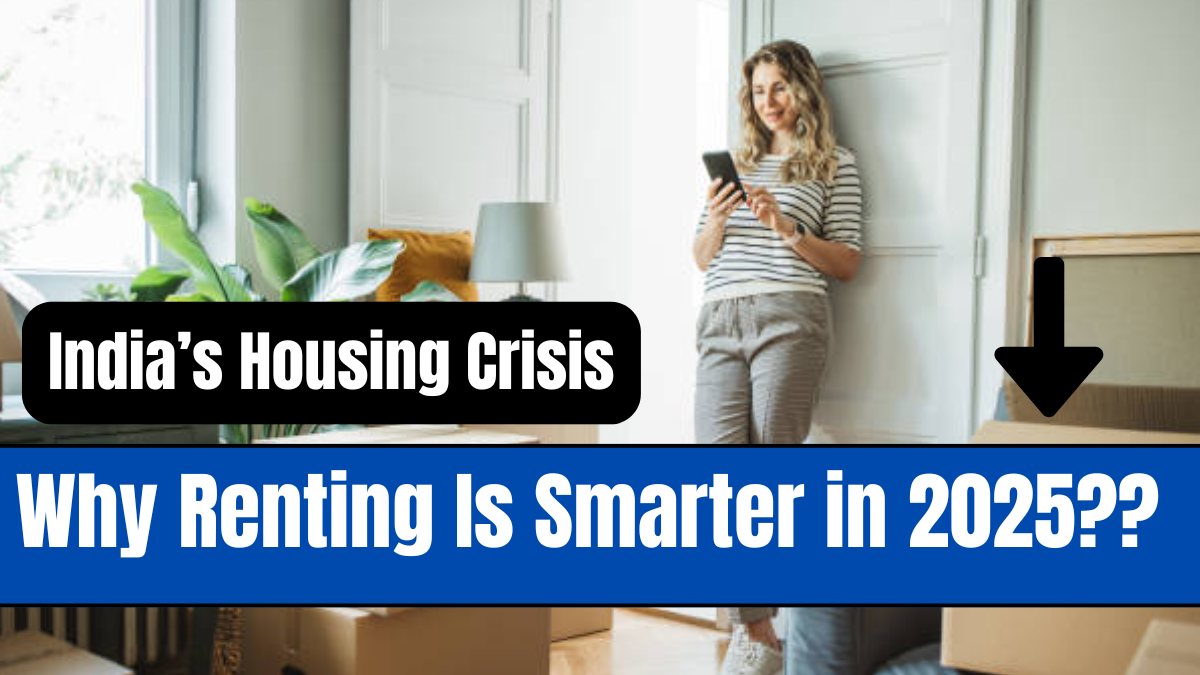Buying a house in India is no longer just difficult—it’s increasingly becoming a financial illusion for the average Indian. In a recent viral LinkedIn post, investment banker Sarthak Ahuja detailed the harsh reality of India’s urban housing market and why even two decades of diligent savings may not be enough to afford a home.

The P2I Reality Check
According to Ahuja, the Price-to-Income (P2I) Ratio in India’s major cities has skyrocketed. The P2I ratio indicates how many years of income an individual would need to afford a house. In India, urban hubs like Mumbai, Bengaluru, and Delhi now exhibit a P2I of 11.
“That means 11 years of full income,” he writes. “And if you assume 50% of your income goes into expenses, that’s over 20 years of savings.”
To put that into perspective, India’s urban housing markets now mirror cities like New York in terms of affordability—a city known for being one of the world’s most expensive real estate markets.
The Three Key Factors Behind the Crisis
Ahuja points out three major reasons why housing has become prohibitively expensive in Indian cities:
1. Outdated Building Regulations
India operates on a very low Floor Space Index (FSI), which restricts the vertical growth of buildings. Most metros have an FSI between 1.3 and 3.5. In contrast, the FSI in the United States averages 15, and in Singapore, it goes up to 25. This results in fewer housing units being available in cities already grappling with high demand, thereby pushing prices higher.
2. Artificial Scarcity by Developers
Ahuja accuses private developers of creating false scarcity to manipulate prices. “They’ll release only 5 units for sale in a 100-unit project to set inflated prices through scarcity. The next 5 go for 10% more.”
This staged release keeps the illusion of high demand alive, allowing developers to push up rates steadily without needing real market justification.
3. Real Estate as a Tool for Black Money
According to Ahuja, a large part of India’s real estate economy is fueled by unaccounted money. “It is said that less than 10 families own 20% of the land in Mumbai, and 500 families own half of Mumbai,” he explains.
Real estate thus becomes a vehicle for cash parking rather than a utility-focused asset, making prices shoot up beyond the reach of salaried professionals.
What Can Homebuyers Do?
Ahuja recommends that potential buyers only commit to purchasing a home if they can afford at least 50% of the total price as a down payment. Additionally, EMIs should not exceed 35% of one’s take-home income.
If that’s not achievable, he advises against rushing into a purchase. “Live on rent and build income,” he suggests, stating that renting allows for greater financial flexibility, investment opportunities, and lifestyle choices.
Tier 2 Cities as a Smarter Option
With metros increasingly becoming unaffordable, Ahuja recommends looking into Tier 2 cities. These cities offer more realistic property rates, growing infrastructure, and better quality of life without the pressure of exorbitant housing costs.
A Market in Need of Reform
The crisis, as laid out by Ahuja, is not just a personal dilemma but a systemic issue that requires regulatory overhaul, greater transparency in real estate practices, and rationalization of land ownership.
While the dream of owning a home may still be alive, Ahuja’s insight makes it clear that smart planning, awareness, and sometimes the wisdom to rent instead of buy might just be the better financial decision in 2025.
Frequently Asked Questions (FAQs)
Why is the Price-to-Income (P2I) Ratio important in real estate?
It indicates the affordability of housing. A high P2I means it takes more years of income to buy a home, signaling that the market may be overpriced for average earners.
What is Floor Space Index (FSI), and how does it affect housing prices?
FSI determines how much construction is allowed on a plot of land. Lower FSI limits vertical growth, causing artificial scarcity and higher prices.
How do developers create artificial scarcity?
By releasing only a small number of units at a time and increasing prices with each release, developers create an illusion of demand and inflate prices.
Why is real estate a preferred investment for black money?
Real estate transactions often involve large amounts of unreported income, making it an attractive avenue for hiding illicit wealth.
Should I buy or rent a house in 2025?
If you can’t afford 50% upfront or your EMI exceeds 35% of your income, renting might be a wiser financial choice.
Are Tier 2 cities better for buying property?
Yes, they generally offer lower real estate prices, developing infrastructure, and better quality of life, making them ideal for long-term investment.
Click here to know more.
Aanchal is a passionate writer with a keen interest in storytelling, content creation, and creative expression. She enjoys exploring diverse topics and crafting engaging narratives that captivate readers.

